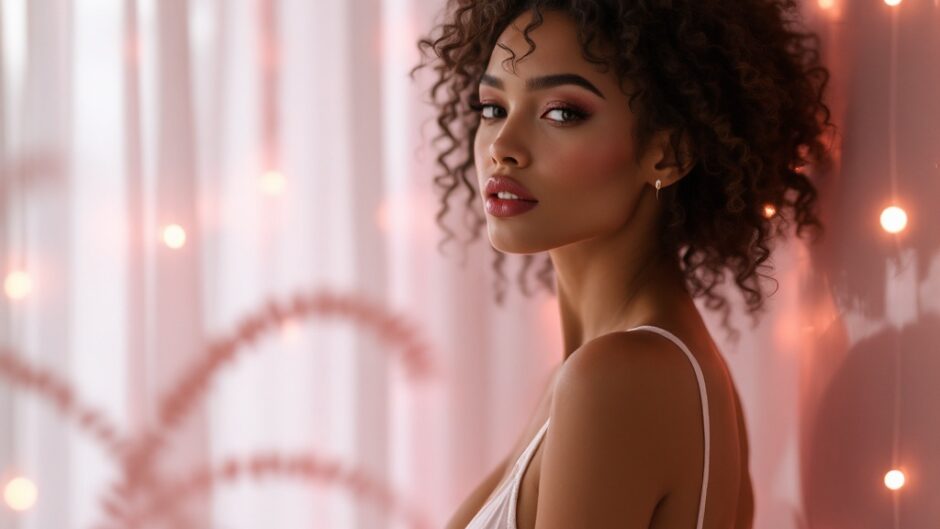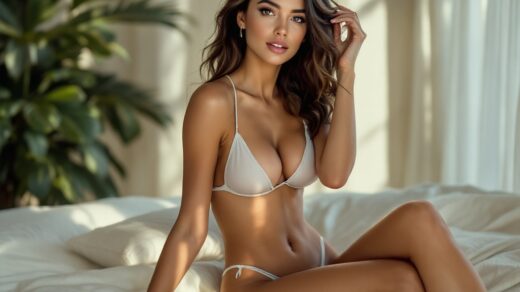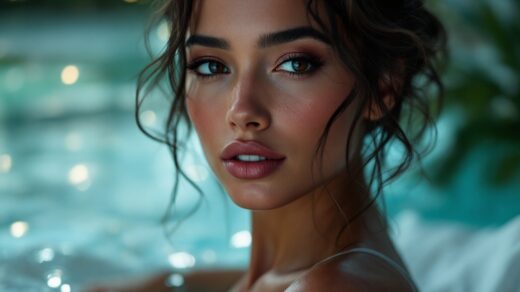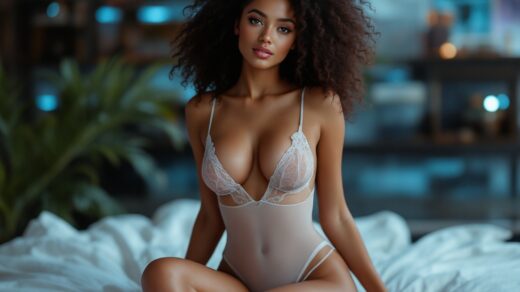Color transcends mere visual allure; it is an evocative language that conveys emotions and ideas without the need for spoken words. In the artistic world, color theory forms the backbone that can significantly amplify the impact of creations, especially in expressive areas like nude art. As AI steps into the art creation arena, it forms an intriguing crossroad where cutting-edge technology meets age-old artistic principles. This discussion delves into the ways AI utilizes color theory in crafting nude art, enhancing both imagination and emotional depth. Grasping these ideas allows artists to stretch the limits and craft works that resonate profoundly with audiences. What follows is an investigation into how color, through the lens of artificial intelligence, shapes the portrayal of nude figures.
Grasping the psychological connotations of colors is indispensable for artists aiming to stir specific feelings in their art. Color, notably, can entirely alter the audience’s perception and emotional response to a piece. For example, warm hues like reds and oranges may embody passion and vigor, whereas cooler shades like blues provide a sense of serenity and peace. Such psychological underpinnings are particularly crucial in nude art, often aiming to convey intimacy and emotional richness. Artists and AI alike can harness these emotional triggers by carefully planning their color palettes, producing artwork that deeply engages beyond visual charm.
The Significance of Color in Nude Art
Color in nude art is far more than an aesthetic selection; it crafts the core narrative of the piece. Each hue has the potential to significantly alter the mood and message conveyed. Consider the contrasting impressions of light pinks versus profound, vivid reds. Lighter hues can summon images of softness and purity, while bolder colors might express confidence and allure. These deviations contribute to a particular feeling enveloping the depicted figure. Often, even slight alterations in color can transform how a work is interpreted entirely.

The Psychological Influence of Colors
- Red: Typically signifies passion and energy, perfect for instilling vibrancy.
- Blue: Embodies calm and serenity, frequently used to express tranquility.
- Yellow: Linked with happiness and brightness, capable of sparking joy.
AI’s Role in Applying Color Theory
Artificial intelligence possesses the ability to process extensive datasets, encompassing established color theories and the emotional responses tied to different hues. This capability allows AI-generated art to mirror a refined aesthetic that a human artist might take years to hone. By studying traditional works, AI gains insights into preferred color patterns and combinations. This know-how enables it to produce nude art that not only appeals visually but adheres closely to the principles of color theory. Thus, we witness a vibrant fusion of art and technology, elevating the nude art genre through algorithmic prowess.
Algorithms and Choosing Colors
The algorithms powering AI art generation are in a constant state of evolution. These algorithms can identify which color combinations are most effective, ensuring that the created piece aligns with the intended emotional narrative. Through continuous learning, AI adapts and enhances its grasp of color interactions, traditionally taught in art academies. This journey often involves examining masterful artworks that utilize color to broadcast complex emotions. Consequently, we see the creation of intricately stunning nude images, honoring color theory principles while expanding creative horizons.
| Color | Emotion | Nude Art Application |
|---|---|---|
| Red | Passion | Fosters intimacy |
| Blue | Calm | Conveys serenity |
| Yellow | Joy | Accentuates playfulness |
Employing Color Palettes in AI-Created Nude Art
Selecting an appropriate color palette is vital for achieving unity in any art piece, and AI-crafted nude art is no exception. By sticking to tried-and-true color schemes, artists can craft artworks that captivate viewers visually. Emphasizing harmony and contrast can immensely boost a piece’s overall aesthetic appeal. Artists can attain this harmony through monochromatic, complementary, or analogous color schemes. Each scheme serves distinct purposes and conveys different emotional messages.

Common Color Schemes for Nude Art
- Monochromatic Schemes: Leverages variations of one hue to create a cohesive appearance.
- Complementary Schemes: Combines contrasting colors to introduce visual vibrancy and dynamism.
- Analogous Schemes: Utilizes colors adjacent on the color wheel for a harmonious look.
Challenges and Limitations in Color Application in AI Art
Although AI has made remarkable strides in generating art, certain difficulties persist, particularly regarding color usage. Misunderstandings can crop up, especially when AI tries to accurately depict varied skin tones. This limitation is critical to address, as nude art celebrates the diversity inherent in the human form. AI might also struggle with over-saturation, producing images that feel more artificial than genuine and raw. As technology improves, these hurdles will need addressing to maintain the credibility of AI-generated art.
Possible Problems in Color Execution
- Mishandling Tone: AI might render skin tones inaccurately, notably in diverse portrayals.
- Excessive Saturation: Some AI-generated works might appear overly vibrant, compromising realism.
- Subtlety Overlooked: AI may miss nuanced color variations that convey depth.
The Future of Color Theory in AI-Powered Art
There is immense potential ahead for color theory in AI-generated art. With innovations on the cusp, we anticipate improved capabilities in understanding color through emotional and interactive lenses. Emerging technologies will likely empower AI to delve deeper into the multifaceted emotional responses that colors can evoke. This exploration in the artistic domain promises audiences more nuanced and profound experiences. The marriage of artistic heritage and technological progress doesn’t merely augment art—it transforms it entirely.
Emerging Innovations
We stand on the brink of a revolutionary epoch in artistic expression. AI advancements are poised to redefine how we perceive and apply color. As these tools become more advanced, art not only pleases the eyes but also touches the soul with deep emotional resonances. This evolution in applying color theory will foster a more profound connection between art, the creators, and spectators. Together, these elements will invigorate the sphere of erotic art in thrilling new directions.
Conclusion
Color theory is pivotal in developing AI-generated nude art. By comprehending color psychology and harmony, artists can create pieces that evoke meaningful emotions beyond mere visual spectacle. Integrating AI into this artistic process allows for unparalleled creative exploration. As advancements continue, merging color theory with AI will challenge and redefine how we appreciate and perceive erotic art. In this ever-evolving canvas, creativity knows no boundaries, foretelling vibrant futures for artists and audiences alike.
FAQ
- What is color theory? Color theory is a framework detailing how colors interact, the emotions they evoke, and how to combine them effectively in artistic endeavors.
- How does AI utilize color theory in art? AI employs algorithms to scrutinize color patterns and the emotions they evoke, crafting art that resonates with observers.
- What are optimal color palettes for nude art? Effective color palettes include monochromatic, complementary, and analogous schemes, each offering unique visual and emotional impacts.
- Can AI accurately portray diverse skin tones in nude art? AI has made great progress, yet challenges persist in precisely rendering diverse skin tones without pitfalls such as misrepresentation or over-saturation.
- What future developments are expected in color theory and AI? Future developments may include refined algorithms for analyzing color interactions and more nuanced understandings of the emotional responses colors elicit in art.



